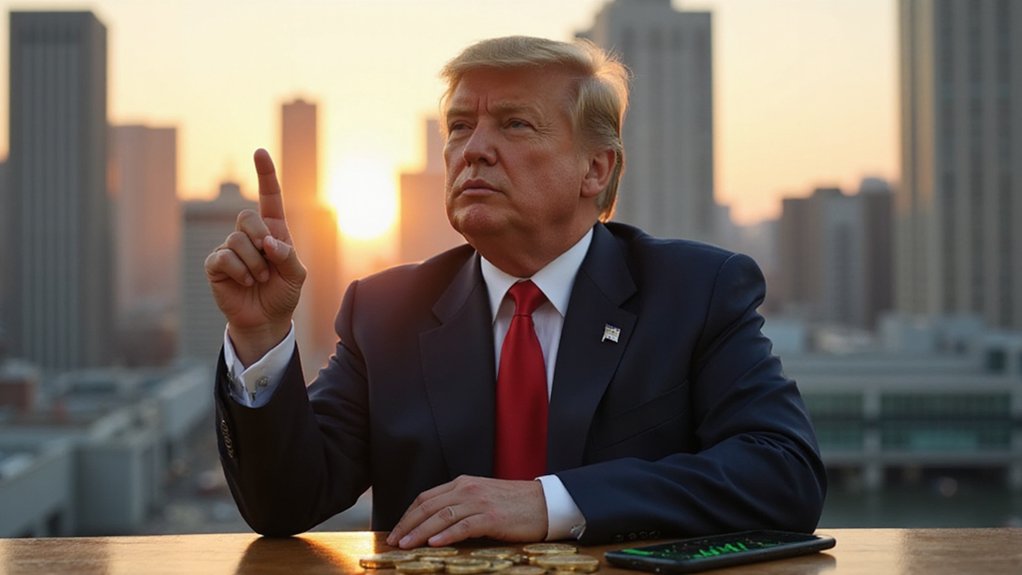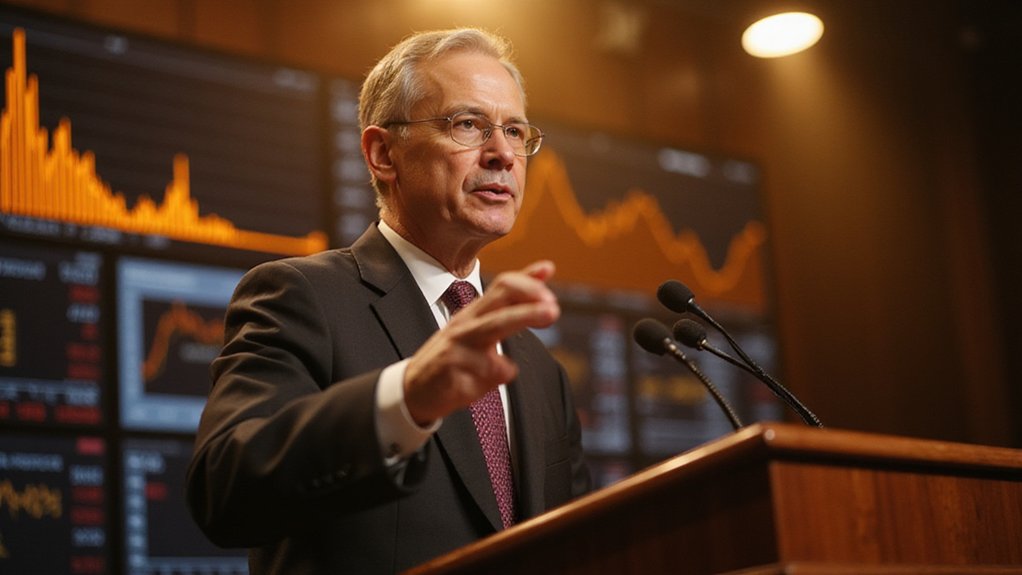Ambition, it seems, runs in the family—though whether Eric Trump’s foray into cryptocurrency represents shrewd financial acumen or merely the latest chapter in the Trump brand‘s perpetual quest for relevance remains an open question. As Co-founder and Chief Strategy Officer of American Bitcoin, Trump has positioned himself at the intersection of political influence and digital asset accumulation, orchestrating what amounts to a full-scale assault on traditional banking‘s monopoly over institutional treasury management.
The numbers suggest serious intent: Metaplanet Inc.’s pivot from hospitality to Bitcoin accumulation under his leadership has yielded 18,888 BTC valued at $2.1 billion—a transformation that would make even the most seasoned corporate restructuring specialists raise an eyebrow.
Trump’s prediction of Bitcoin reaching $175,000 by 2025 (with eventual million-dollar aspirations) positions him squarely in the “digital gold” evangelism camp, though such prognostications inevitably invite scrutiny about whether he’s visionary or simply another crypto maximalist with unusually prominent family connections. His emphasis on Bitcoin’s 60% year over year historical appreciation rate provides mathematical foundation for these ambitious projections.
Vision or vanity? Trump’s million-dollar Bitcoin prophecy tests whether prominence translates to prescience in cryptocurrency’s unforgiving arena.
His Asian expansion strategy demonstrates remarkable regulatory sophistication, leveraging Japan’s Financial Services Agency approval of yen-denominated stablecoins and Hong Kong’s evolving Stablecoins Ordinance to establish acquisition beachheads. This geographic arbitrage—exploiting regulatory clarity across jurisdictions—suggests someone who understands that crypto’s future lies not in Silicon Valley libertarianism but in institutional legitimacy.
The Trump family’s broader crypto ecosystem adds complexity: World Liberty Financial‘s $20 billion token valuation (backed by Abu Dhabi funds) and the planned $1.5 billion NASDAQ treasury company create a vertically integrated digital asset empire that traditional banks might find uncomfortably familiar. The trend follows Michael Saylor’s pioneering approach with MicroStrategy, which has accumulated over $72 billion in Bitcoin, demonstrating that the treasury company model can achieve substantial scale. Beyond simple accumulation strategies, sophisticated investors are exploring crypto staking opportunities that can generate annual returns between 5-15% through network participation.
The $550 million raised through WLFI token sales demonstrates market appetite, even as critics question whether these ventures represent genuine innovation or elaborate financial engineering.
Whether Trump emerges as crypto’s institutional pioneer or another cautionary tale about political capital meets speculative assets remains unclear. His planned public listing via reverse merger with Gryphon Digital Mining suggests confidence in regulatory approval—a bet that political connections can navigate the treacherous waters where cryptocurrency meets traditional finance.
Time will determine whether he’s disrupting banking or simply repackaging familiar ambitions in blockchain clothing.








